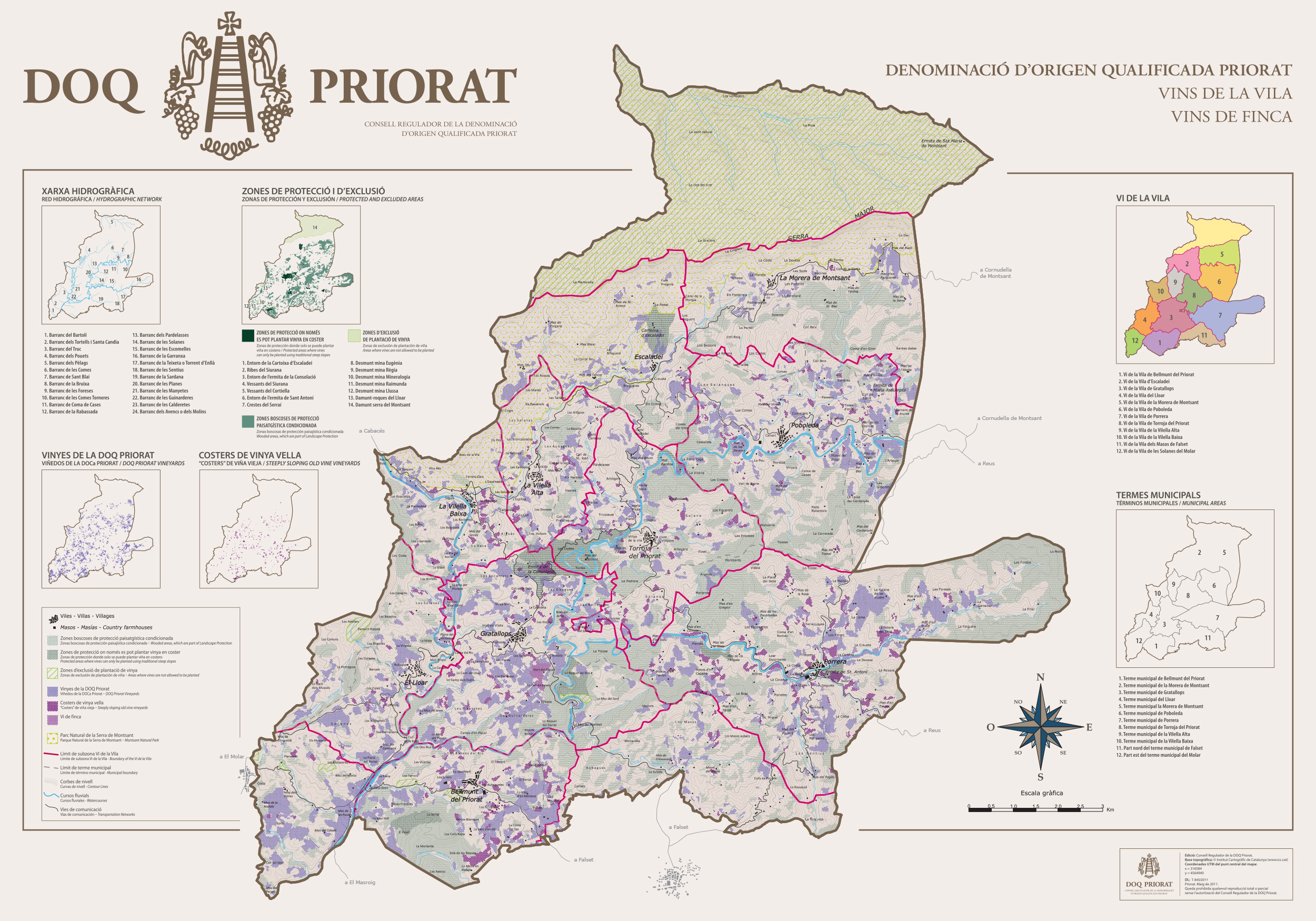Priorat or Priorato in Spanish is a small region in Catalunya (Spain). The area is located in the northeast of Spain, northwest of Tarragona, and is almost entirely surrounded by the Montsant mountains. The area has a total superficie of around 500km² and is constituted of 12 small villages of less than 10.000 inhabitants.
ORIGIN
The name Priorat derives from the Priorato de Scala Dei or Monastry of the Stairs to God. It is generally considered that the monks inhabiting this monastry were the first to bring the art of wine-making to the area, and this already in the 12th century.
Near the end of the 19th century, this area – together with many other notorious wine areas in Europe – was affected by phylloxera, resulting in a massive loss of vineyards in Priorat. It was not until the 1950s before wine farmers started with the restoration of the area’s most precious natural capital. Where originally the focus was on the production of bulk wines, local stakeholders quickly shifted towards the production of quality wines. Today, the wines from Priorat are among the best and most expensive in Spain.

GEOGRAPHY & CLIMATE
Priorat has a mountainous landscape. Most vineyards are located at an altitude of 100-700 m. The only flat land found here is in the plain of the Siurana river valley. Vineyards are laid out in terraces against the flanks of the mountains or are planted on the slopes themselves. The distinctive llicorella soil is of volcanic origin and plays an important role in the quality of Priorat wine.
The climate is very particular with long, hot summers and relatively cold winters. In general, the climate is regulated by the Mediterranean winds and the protection provided by the Montsant mountains. There is an average of 600 mm of rain per year and the sun shines for about 2.600 hours.


